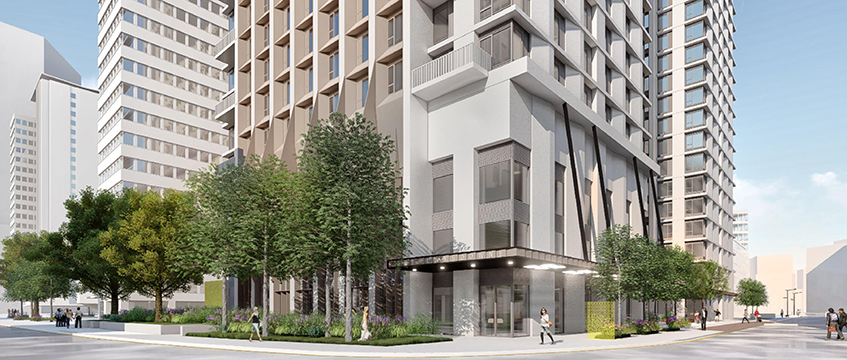London boroughs have received applications for 1,875 office-to-resi homes since the government removed the 1,500 sq m cap on conversions in March.
According to Knight Frank’s latest London New Homes Report, these mark the first significant wave of applications since 2021.
It is also a 20% increase on pre-pandemic levels, when 1,600 homes were proposed in the same six-month period in 2019.
The removal of the space cap has resulted in a variety of large schemes emerging across 12 London boroughs. In Hounslow, four applications exceeding 100 homes each have been filed, including the conversion of a Dell EMC office into 206 flats and the transformation of two towers of Great West House into 263 flats.
In Croydon, major proposals include converting the “50p Building” into 250 flats and the Landsdowne Building into 118 flats. Additionally, in central London, One Bessborough Gardens, formerly an MI5 spy school, will be converted into 53 homes by Firethorn Trust.
According to Knight Frank’s analysis of council planning websites and Molior London data, annual housing delivery in the capital has dropped to 35,000 homes, a 10% decline compared to the previous year. This falls significantly short of the London Plan’s target of 52,300 homes a year.
The agency also found that since March, several applications to convert large commercial premises into residential flats have been refused, resulting in approximately 300 potential homes being blocked.
Knight Frank said the applications had been refused “on grounds including unacceptable highway impact and failure to provide fire safety information”.
Abigail Heyworth, a partner in development strategy and finance at Knight Frank, said: “The lifting of the size cap on office-to-residential conversions has opened up new opportunities for developers. It enables the industry to make better use of underutilised office spaces and help to mitigate the risk of stranded assets in the capital. London has faced a persistent housing shortage over the years, so the relaxation of area thresholds is helping to close that gap.”
Stuart Baillie, head of planning at Knight Frank, added: “It is clear that the removal of the size cap on residential conversions via PDR has led to proposals for almost 2,000 new homes. This remains only a small fraction of London’s growing housing need. Under the government’s revised National Planning Policy Framework, the London mayor is now tasked with delivering 80,000 homes per year to address the ongoing shortfall. Finding sufficient land to get anywhere near these numbers is going to be extremely challenging. Conversion of redundant commercial properties is surely part of the answer.”
Image © HTA Design
Send feedback to Akanksha Soni
Follow Estates Gazette











